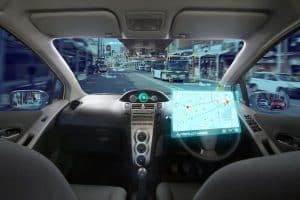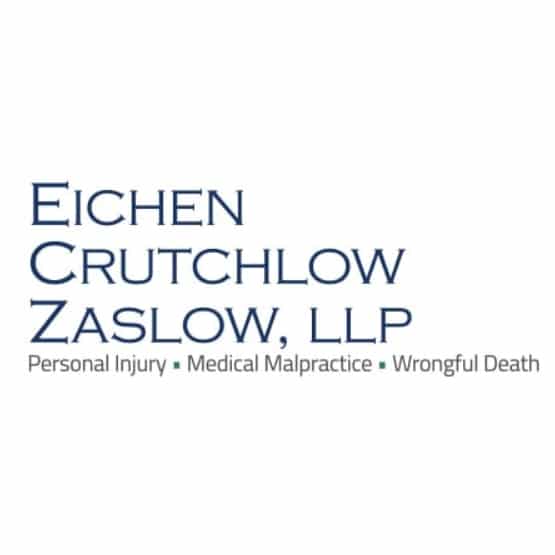Trenton May Be Getting Driverless Taxis
 Imagine having the option of riding in a vehicle that drives itself. Imagine that this self-driving vehicle can take you to any destination in the city safely. Well, thanks to the approval of a recent pilot program, that possibility may finally become a reality. New Jersey’s Department of Transportation distributed a $5 million grant towards the Trenton Mobility and Opportunity Vehicles Equity System (MOVES) project.
Imagine having the option of riding in a vehicle that drives itself. Imagine that this self-driving vehicle can take you to any destination in the city safely. Well, thanks to the approval of a recent pilot program, that possibility may finally become a reality. New Jersey’s Department of Transportation distributed a $5 million grant towards the Trenton Mobility and Opportunity Vehicles Equity System (MOVES) project.
The MOVES project plans to deploy 100 autonomous vehicles that will serve as another public transit option for the 90,000 residents of Trenton, New Jersey. Should the project come to fruition, the introduction of autonomous vehicles can change the way the general public views car ownership and public transportation.
It could also cause some real problems. About 90,000 people live in Trenton, a city with 7.58 square miles of land but almost 169 miles of roads. As the State Capital, it receives millions of visitors each year, and sees thousands of employees and contract workers who come to the city each day. While all of this seems like an excellent reason to choose Trenton as a testing spot for driverless taxis, we wonder if a busy city is really the best place to test this technology.
What types of technologies do autonomous vehicles use?
Autonomous vehicles use several types of technologies to function: actuators, sensors, machine learning systems, complex algorithms, and powerful processors. These technologies allow autonomous vehicles to perform functions like creating and maintaining a map of the locations, reading road signs, monitoring the positions of nearby vehicles, and remaining on the lookout for pedestrians.
Autonomous vehicles incorporate the use of video cameras and lidar sensors to detect traffic lights, bounce rays of light off the vehicle’s surroundings to measure distances, and identify lane markings. There are also ultrasonic sensors located in the wheels that can help the vehicle detect curbs and nearby vehicles when attempting to park.
What are the levels of autonomous driving?
There are six levels of autonomous driving:
- At Level 0, drivers are still necessary to operate the vehicles and the vehicles contain a single autonomous feature like lane assist warnings.
- At Level 1, vehicles can only perform partial automation duties like acceleration or steering; a human driver is required for everything else.
- At Level 2, the vehicles can handle braking AND steering, but still need a driver to handle all other functions.
- At Level 3, vehicles perform a majority of driving operations, but still require the presence of a human driver, especially if conditions are not met.
- At Level 4, the vehicle is able to perform all driving functions under limited conditions, so a human driver may be required.
- At Level 5 vehicles can perform all driving functions under all circumstances without a person present.
What are the safety risks associated with autonomous vehicles?
As exciting as it is to think of all of the activities that one can do while autonomous vehicles take them where they want to go, nothing is set in stone. Fully autonomous vehicles are still being tested and are not available to the general public as of yet. Many legislators argue that there are several environmental, technological, and legislative challenges that are affiliated with autonomous vehicles:
Weather conditions
One of the potential challenges that concerns legislators is how autonomous vehicles will perform under specific weather conditions. Ice, rain, and snow affect roadways that autonomous vehicles may not be programmed to recognize. Autonomous vehicles that use video cameras and sensors to identify lane markings may have a difficult time locating markings that are covered by ice or snow. Autonomous vehicles may lose all functioning abilities if the conditions of the road are altered.
Technical malfunctions
Another potential challenge associated with autonomous vehicles can be technical malfunctions. A 2020 report from AAA “found that over the course of 4,000 miles of real-world driving, vehicles equipped with active driving assistance systems experienced some type of issue every 8 miles, on average.” If manufacturers haven’t perfected these basic automated systems, how confident can we be that a fully autonomous, full self-driving vehicle will be safer?
Hacking risks
Hacking has increased since the beginning of the pandemic. What is the protocol if an autonomous vehicle falls under the control of a skilled hacker? This is a real concern, as we know that Teslas in particular can be hacked, as can Jeeps. Cybercriminals who obtain control of autonomous vehicles can manipulate the vehicles and put the safety of any human passengers in jeopardy. Cybercriminals can hold the vehicle and human passenger for ransom or use the vehicle as a weapon.
Who is liable for a crash caused by an autonomous vehicle?
One legal challenge that legislators are concerned about is who will be held liable in a traffic accident that involves an autonomous vehicle. In this type of scenario, the following questions need to be answered:
- Who is the responsible party that will be held liable for the traffic accident?
- If there is a human passenger inside the autonomous vehicle, will that passenger be held liable?
- Will the vehicle’s manufacturer be held liable for the traffic accident?
- What responsibility will be placed on the other driver involved in the accident, if there is another driver?
- What if two autonomous vehicles are involved in the traffic accident?
There are many legal aspects to consider regarding traffic accident liability and autonomous vehicles. In a busy city like Trenton, there’s a real concern that accidents could increase, and people could be grievously injured, with the introduction of self-driving cars.
Autonomous vehicles may be the future, but until the regulations are firmly set, you may face an uphill battle if you are injured in a crash. Eichen Crutchlow Zaslow represents car accident victims across New Jersey, handling complex claims involving self-driving cars. Call us at 732-777-0100 or submit our contact form to schedule a free consultation at one of our offices in Edison, Red Bank, or Toms River.

Eichen Crutchlow Zaslow, LLP has purposely remained small in size, because it is important to us that we get to know our clients and their needs. Larger NJ injury firms may churn out case after case, but that’s not how we operate. Partners Barry Eichen, William Crutchlow, and Daryl Zaslow have created a firm with the resources to handle complex litigation, and a team that takes your case personally.
Find out more about Eichen Crutchlow Zaslow, LLP
